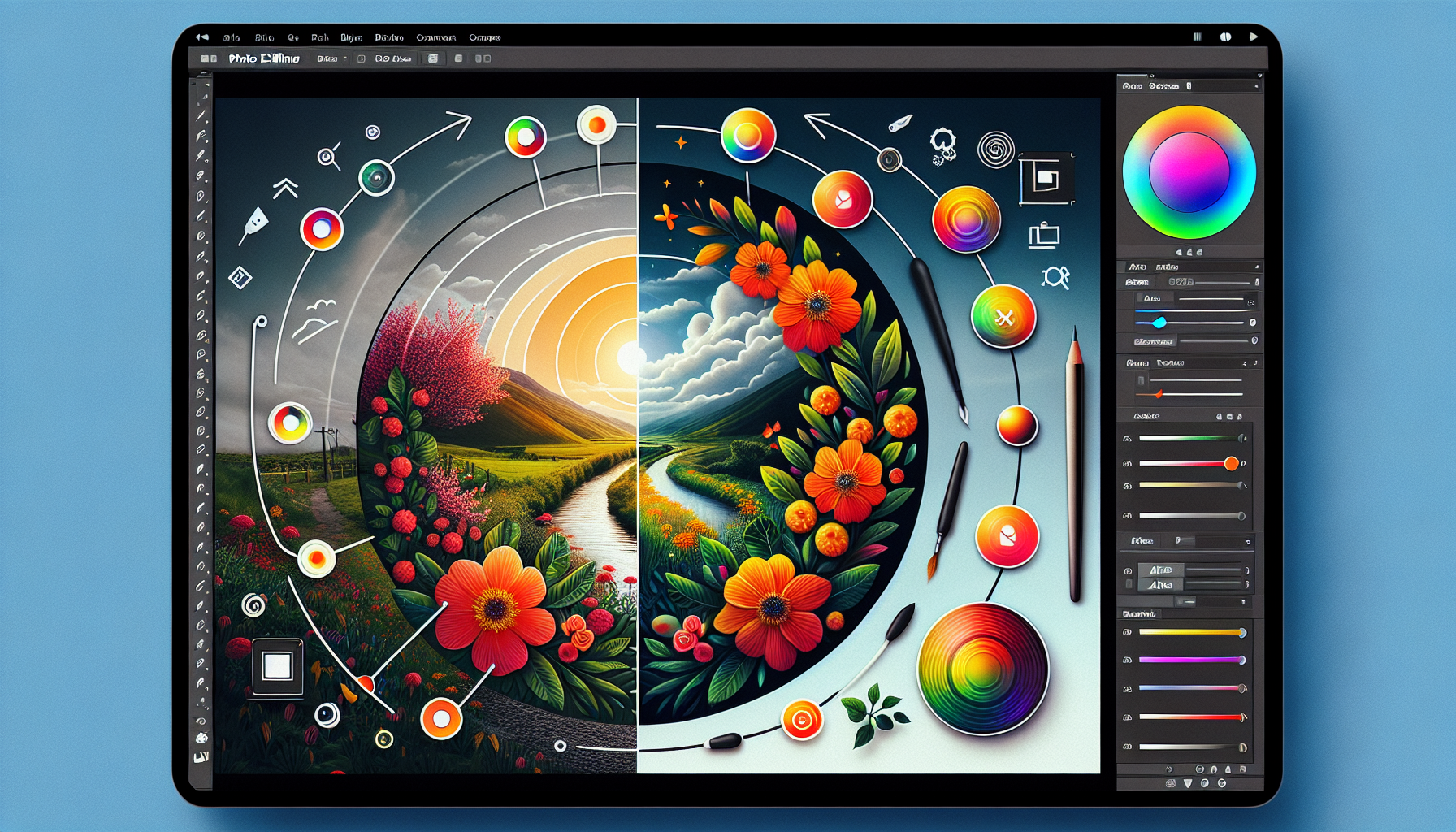Diving into the world of web development opens up a realm of possibilities, and “Building Your First Website: A Step-by-Step Tutorial” is your gateway to mastering the fundamentals of creating robust and visually captivating websites. This course is meticulously designed to introduce beginners to the essential skills needed in the industry, starting from the ground up with HTML and CSS—the building blocks of the web. By guiding you through the creation of your first web page, styling it for visual appeal, and culminating with advanced layout techniques and responsive design, this comprehensive tutorial ensures you are well-equipped to embark on your web development journey. Embrace the opportunity to transform your ideas into fully functional websites with a solid foundation in HTML and CSS, coupled with a keen understanding of responsive design principles that cater to a seamless user experience across all devices.
Lesson 1

Embarking on Your Web Development Journey: Discovering HTML
Welcome to the exciting world of web development! If you’re keen to build your very first website, understanding HTML is your starting point. HTML, or HyperText Markup Language, is the backbone of the web, creating the structure and content of pages. This how-to guide delves into the basics of HTML, ensuring you’re well-equipped to start your web development adventure.
What Exactly is HTML
At its core, HTML allows you to structure web pages. It uses a series of elements or ‘tags’ to denote text headings, paragraphs, links, images, and much more. Understanding how to use these tags is crucial in crafting the content of your website.
Building Blocks of HTML
To kick off your journey, every HTML document begins with a basic structure. This structure includes essential elements that define the overall layout of your web page.
- DOCTYPE: This declaration defines the version of HTML and helps the browser to display the page correctly.
- : This element wraps the entire document and is the root element of an HTML page.
- head: Contains meta-information about the document, such as its title and links to stylesheets.
- body: This section houses the content visible to your audience, including text, images, and links.
Essential HTML Tags
To create content on your web page, familiarize yourself with these common HTML tags:
- p (Paragraph): Marks up text into manageable paragraphs.
- h1, h2, h3, h4, h5, h6 (Headings): Used for titles and subtitles, to structure content logically.
- a (Anchor): Defines hyperlinks to navigate between web pages or to external sites.
- img (Image): Embeds images into your web pages, enhancing visual appeal.
Creating Your First HTML Page
Now, it’s time to put your knowledge into practice. Start by opening a simple text editor and follow these steps to create your first HTML page:
- Type in the basic HTML structure mentioned above.
- Utilize the tags to add headings, paragraphs, links, and images.
- Save your document with a . extension and open it in a web browser to see your handiwork.
Remember, practicing and experimenting with different HTML tags and attributes will refine your skills. The journey through HTML is exciting, providing the foundation you’ll build upon as you explore more advanced web development concepts.
Next Steps in Your Web Development Journey
Mastering HTML is just the beginning. As you become comfortable with structuring web pages, the next adventure lies in styling them with CSS. Combining HTML with CSS allows you to create visually appealing and functional websites.
Embrace the learning process, and remember, every expert web developer started just where you are now. Happy coding!
Lesson 2

Unleash the Power of Styling: Diving into CSS for Web Design
After stepping into the world of HTML and understanding the skeleton of a web page, it’s time to bring your website to life with colors, layouts, and styles. This is where CSS, or Cascading Style Sheets, come into play. Jumping into CSS can dramatically change how your website looks and feels, making it an essential skill for budding web developers. Let’s explore the fundamentals of CSS and how you can use it to style your first HTML page.
What is CSS and Why is it Important
CSS is a stylesheet language used to describe the presentation of an HTML document. It controls how elements on your web page look, including their colors, sizes, and positions. By separating the content (HTML) from the design (CSS), it’s easier to maintain and update your website. Moreover, CSS enables responsive designs that are crucial for a great user experience on various devices.
The Core Concepts of CSS
To get started with CSS, there are a few basic concepts you’ll need to understand:
- Selectors: These target the HTML elements you want to style.
- Properties: Define what aspect of the element you want to change (color, font, width, etc.).
- Values: Specify the settings of the properties (e.g., red, 16px).
Together, selectors, properties, and values allow you to create rules that define how your web pages should look.
Applying CSS to Your HTML Page
There are three ways to apply CSS to your HTML: inline, internal, and external. For a clean and organized approach, we recommend using external CSS, which involves linking a separate .css file to your HTML document. This method enhances readability and reusability across multiple pages.
Taking Your First Steps with CSS
Let’s put theory into practice. Begin by creating a simple .css file to style your first HTML page. Here are some basic styles to get you started:
- Changing the background color of your page
- Setting font types and sizes for your text
- Styling links to make them more appealing
By experimenting with different CSS properties, you’ll quickly see the transformation of your web page from a plain document to a visually engaging experience.
From Basics to Beyond: Expanding Your CSS Knowledge
Mastering the basics of CSS opens up a world of possibilities. Explore more advanced topics like Flexbox for layout, CSS Grid, and media queries for responsive design. Remember, the key to becoming proficient in CSS is practice and exploration.
As you continue to learn and apply new CSS techniques, your websites will become more sophisticated and user-friendly. Embrace the creative potential of CSS and enjoy the journey of bringing your web designs to life!
Lesson 3

Mastering Web Layouts: Your Guide to Responsive Design
Stepping into the realm of web development brings you closer to the intricate art of web design. After exploring the basics of HTML and CSS, it’s now time to elevate your skills by mastering web layouts and responsive design. This guide will walk you through the essential techniques of creating web layouts that adapt seamlessly across different devices, ensuring a flawless user experience.
The Cornerstone of Modern Web Design
Responsive design is not just a trend; it’s a cornerstone of modern web design. With a multitude of devices in use today, your website must look and function perfectly on any screen size. Achieving this requires a solid understanding of CSS media queries, Flexbox, and other layout techniques.
Diving into Display Properties
Understanding CSS display properties is fundamental in manipulating the layout of your web pages. The display property has several values, such as block, inline, and inline-block, each serving a specific purpose in arranging elements on the page. However, the real game-changer in responsive design has been the introduction of Flexbox and CSS Grid, which offer more control and flexibility over layouts.
Flexbox: Revolutionizing Web Layouts
Flexbox is a layout mode in CSS that allows you to design complex layout structures with ease. It provides a more efficient way to align and distribute space among items in a container, even when their size is unknown. Flexbox is particularly useful for creating responsive designs, as it adjusts the layout automatically based on the screen size.
Embracing Media Queries for Responsive Design
Media queries are a powerful tool in CSS that enable you to apply different styles based on certain conditions, such as screen width, resolution, or orientation. By utilizing media queries, you can create a flexible design that looks great on all devices, from desktops to smartphones.
Putting It All Together
Now, let’s apply these concepts to make your first HTML page responsive:
- Start by structuring your HTML content using semantic tags.
- Use CSS Flexbox to arrange your elements in a flexible layout.
- Implement media queries to adjust the layout and styles for different screen sizes.
Experimenting with these techniques will sharpen your skills and open up new possibilities in web design. Remember, the key to mastering responsive design is practice and persistence.
Your Path to Responsive Web Design
As you continue your journey in web development, exploring the depths of responsive design will set your work apart. Understanding the intricacies of web layouts and applying responsive techniques will ensure your websites are accessible and enjoyable for all users, regardless of their device.
Embrace the challenges and rewards of responsive design, and watch as your websites transform into versatile, user-friendly experiences. Happy coding!
In wrapping up “Building Your First Website: A Step-by-Step Tutorial,” you have now navigated the foundational landscape of web development from the basics of HTML to the intricacies of CSS and responsive design. This journey has equipped you with the essential tools and knowledge to construct and style dynamic, user-friendly websites, setting a solid foundation for further exploration into the vast world of web development. To ensure you have firmly grasped the key concepts covered throughout this course, a 10 question quiz awaits below. This quiz serves as an opportunity to test your knowledge and reinforce your learning, cementing your readiness to take on your next web development projects with confidence.
Test Your Knowledge With this short Quiz
Click here to copy your score to share on facebook!







